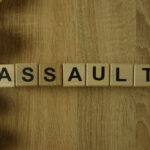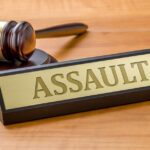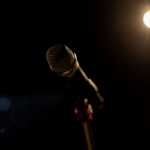Surf Rage – The Scourge On Our Beaches

Australian beaches can be a dangerous place and, apparently, it’s not just the big fish you have to be wary of if you’re a surfer.
A 29-year old is the latest person to be charged over a surf rage incident, which ironically happened in Byron Bay on the far north New South Wales Coast. A popular tourist town, known globally for its iconic beaches and its welcome slogan which urges everyone to “Cheer up, slow down, and chill out.”
The man got into an argument with another surfer over the same wave at Broken Head, a well-known surfing spot just south of the town.
The defendant allegedly pushed his surfboard into the other man’s head, causing facial injuries and bleeding. Police arrived and arrested the surfing assailant, before charging him with assault occasioning actual bodily harm.
The offence carries a maximum penalty of five years in prison if it goes up to the District Court, or two years if it stays in the Local Court.
Surf rage is on the rise
Surf rage and ‘bullying’ in the water has become more prevalent over the past 10 years, as more and more people take to the waves in an effort to release stress, get fit, cool off and have some fun.
Around 2.3million Australians describe themselves as surfers, and when the ‘surfs up’ there are many competing for the good waves. And it’s not just the board riders out there, but the stand-up paddle boarders, surf skiers, body boarders, surf rescuers and learn-to-surf groups, all aiming to ride the same sets of waves.
Local surfers have also been known to get ‘territorial’ about their neighbourhood beaches, feeling a sense of ‘entitlement’ to a particular place because they live in the area and surf there regularly.
It also seems that people can be caught up in surf rage regardless of their experience, gender or age. Surf journalist Tim Baker describes an incident where his own 10-year old son had a near miss with an adult male surfer, and both father and son copped a mouthful of swearing and abuse when they asked the man to be a bit more careful.
Statistics suggest there are more than a million female surfers in Australia, and some have reported feeling intimidated by males in the water.
Most incidents of surf rage go unreported, but talk to any surfer around Australia and they will have at least one story about aggressive behaviour.
On the Gold Coast in 2014, a surf rage incident made national headlines when it looked like Matt Mortlock might lose his eye after a particularly vicious attack by another surfer who deliberately let his board spear into the man’s face. Mr Mortlock did not want the police to pursue charges against his assailant, but instead to recommend that he undergo anger management therapy.
Seasoned surfers say it’s not always just about getting the best waves. They point out that novices who don’t know surf etiquette can create dangerous situations in the water, especially if they ‘drop in’ or ‘cut in’ on a surfer who is already riding a waves. Newbies can also wreak havoc when they riding the waves with experienced surfers and are not up to speed.
So concerned is Surfing Australia – the national body that represents board riders – that it has started a campaign to teach younger surfers about the ‘do’s’ and ‘don’t’ of riding waves.
The ‘Surfer’s Code’
Several local Councils in New South Wales have also erected signs along beachfronts which remind surfers of the basic rules.
Randwick Council in Sydney installed several of these signs in response to anecdotal evidence of there being 30% more amateur surfers out at Maroubra beach than there were a few years ago.
The purpose of the surfer’s code signage is to help surfers to avoid accidents and conflict.
It’s important for all beach go-ers to remember that violence is never the answer, no matter how frayed tempers may get. Those who fly off the handles may find themselves in court facing assault charges, and may even end up with a criminal record.







